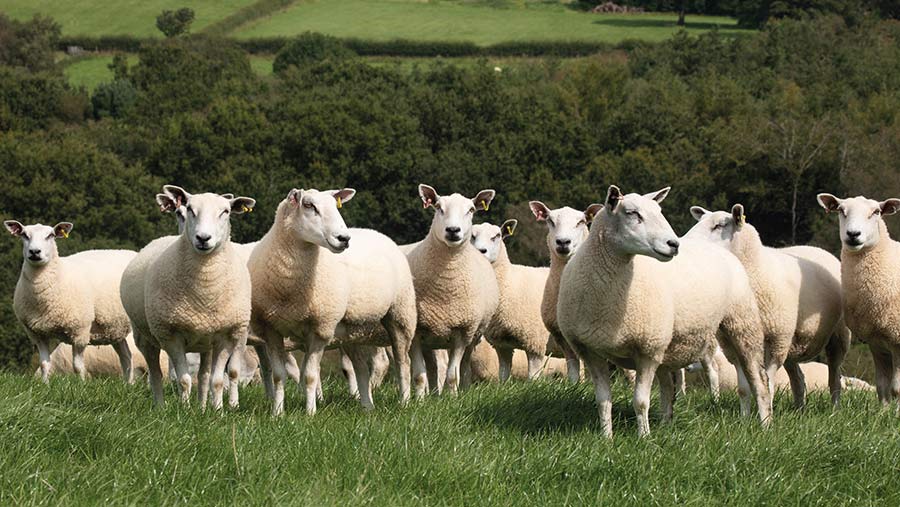Who will benefit from Countryside Stewardship rate rise?
 © Tim Scrivener
© Tim Scrivener Payment rate increases for Countryside Stewardship (CS) may make the scheme a more attractive and viable option for farmers in England looking to offset basic payments cuts, say land agents.
Defra has increased payment rates by 30% on average to attract more farmers into the scheme, which it says is a “bridge” to its more ambitious successor, the Local Nature Recovery scheme under Environmental Land Management (ELM).
The NFU welcomed the announcement by George Eustice at the Oxford Farming Conference, which will apply to existing CS scheme agreements going forward, including those that started on or before 1 January 2022.
See also: Landscape and Local Nature Recovery: What farmers need to know
Winners and losers
Land agents who have pored over the detail say overall payment rate increases will vary according to farm type and the options chosen, and there will be winners and losers (see “Worked examples of CS agreements after revised payment rates” below).
Will Smith, a senior farm consultant at GSC Grays, said: “Historically, payment rates just haven’t stacked up for some farmers, which resulted in low uptake, with rates often insufficient to cover income foregone.
“This was particularly the case for lowland grazing. However, with the new rates, farmers should review the scheme to see whether it would be worthwhile applying this year.”
David Morley, head of conservation and environment for H&H Land & Estates, said some options see a huge rise in payments, but others will be reduced.
But any reductions will only apply to new agreements starting in 2023 and not existing ones.
Upland farmers
One of the biggest percentage increases will be welcomed by upland farmers, he noted. The payment rate for option GS5 (low-input grassland management in severely disadvantaged areas) rises from £16/ha to £71/ha.
“For upland farmers that can manage their land with few inputs, this could finally make Mid Tier Countryside Stewardship worth applying for,” said Mr Morley.
Organic farmers
Organic farmers will be pleased to see that most payment rates for organic management are significantly increased, particularly those for enclosed rough grazing, unimproved grassland, and rotational land, he added.
Mark Burton, from Townsend Chartered Surveyors, in Exeter, said he had crunched the figures for new payment rates among a few of his clients’ agreements and found they were less rewarding for arable and mixed farmers than for livestock farmers.
Arable farmers
For arable farmers, land agents agree it’s a “mixed bag”. There are increases of 10-17% in many of the popular options, including AB1 (nectar flower mix), AB16 (autumn-sown bumblebird mix) and AB8 (flower-rich margins).
But payments for AB14 (harvested low-input cereal) will be cut from £266 to £236 (down 11.2%) on new CS agreements from 2023.
More than 40,000 farmers in England are now participating in either CS or legacy Higher Level Stewardship schemes.
Mr Eustice said the CS payment rate increases had sent a “powerful signal” to farmers that Defra wants them to get involved in the scheme – if they are not enrolled already.
List of the revised payment rates
Worked examples of CS agreements after revised payment rates
Land agents have provided calculations of how the new Countryside Stewardship (CS) payment rate increases will affect their clients’ agreements.
Rob Gazely, a partner at CeresRural, said worked examples for three farms suggested that their average applied increase will be closer to 10% than Defra’s headline figure of 30%.
An application that was made in spring 2021 for an agreement to begin on 1 January 2022 on a 410ha mixed arable, sheep and livestock farm in Essex, showed a 15.9% overall increase in payments will now apply following Defra’s review.
Being significantly invested in livestock, the farm had wanted to integrate grazing into the rotation and aimed to put 15% of their land into option GS4 (legume and herb-rich swards).
As part of the application, the farm also applied for more than £70,000 of capital items, including fencing, gates, livestock troughs and associated pipework.
“Although a very simple CS scheme agreement, this will be transformative to the management regime and will facilitate increased livestock numbers but at a lower grazing density when compared to historic grazing purely on grass,” said Mr Gazely.
Meanwhile, Mark Burton, from Townsend Chartered Surveyors, said three worked examples for livestock farms under the revised CS rates showed payment increases of 16%, 26% and 35% respectively.
Rob Gazely client CS scheme example |
||||||
|
Option |
Amount (ha) |
Existing rate (£/ha) |
New rate (£/ha) |
Existing value (£) |
New value (£) |
|
|
AB8 |
Flower-rich margins and plots |
4.5 |
539 |
628 |
2,426 |
2,826 |
|
GS4 |
Legume and herb-rich swards |
60 |
309 |
358 |
18,540 |
21,480 |
|
TOTAL |
Annual |
20,966 |
24,306 |
|||
|
TOTAL |
Five years |
104,830 |
121,530 |
|||
|
% change |
+15.9% |
|||||
